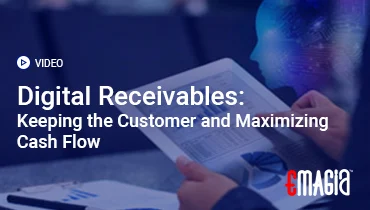In the intricate world of business finance, precision in terminology is paramount. Financial statements, the bedrock of a company’s economic story, rely on a clear understanding of fundamental accounting concepts. Among these, the distinction between liabilities and expenses is crucial, yet it’s often a source of confusion, particularly when it comes to Accounts Payable.
For anyone navigating the complexities of financial reporting, whether you’re a student, a small business owner, or an aspiring accountant, the question “Is Accounts Payable an Expense?” is a common one. The answer is definitive, but understanding *why* it’s definitive requires a deeper dive into the principles of accrual accounting and the structure of financial statements. Misclassifying Accounts Payable can lead to distorted financial health assessments, inaccurate profitability reports, and flawed strategic decisions.
This comprehensive guide will provide a definitive answer to “Is Accounts Payable an Expense?” and thoroughly explain its true nature. We will clarify what is Accounts Payable on a balance sheet, distinguish it from actual expenses, illustrate its accounting treatment, and highlight its vital role in presenting a true and fair view of a company’s financial obligations. By the end, you’ll have a crystal-clear understanding of why Accounts Payable is a Liability, not an expense, and its critical position in the financial ecosystem of any business.
I. The Foundation: Understanding Key Accounting Elements
To answer “Is Accounts Payable an Expense?”, we first need to define the core elements of financial accounting.
A. The Accounting Equation: The Bedrock of Financial Statements
All financial accounting revolves around the fundamental accounting equation:
$$\text{Assets} = \text{Liabilities} + \text{Equity}$$
- Assets: Resources owned by the business that have future economic value (e.g., Cash, Accounts Receivable, Equipment).
- Liabilities: Obligations or debts owed by the business to external parties (e.g., Accounts Payable, Loans Payable).
- Equity: The owners’ claim on the assets of the business after all liabilities are paid (e.g., Common Stock, Retained Earnings).
Understanding these categories is crucial for knowing what goes on a balance sheet.
B. Expenses: The Cost of Doing Business
An expense is the cost incurred by a business in the process of generating revenue. Expenses reduce a company’s net income on the income statement. Examples include rent expense, salaries expense, utilities expense, and cost of goods sold. Expenses are typically consumed within the current accounting period. The question “are accounts payable expenses” often stems from a misunderstanding of this definition.
C. Liabilities: Financial Obligations Owed to Others
A liability is a present obligation of the entity arising from past events, the settlement of which is expected to result in an outflow from the entity of resources embodying economic benefits. In simpler terms, it’s money that a company owes to someone else. Liabilities are presented on the balance sheet. This is where the core of accounts payable a liability lies.
II. The Definitive Answer: Accounts Payable is a Liability
Let’s directly address the central question and explain why Accounts Payable falls squarely into the liability category.
A. Is Accounts Payable an Expense? The Clear No.
To put it unequivocally: No, Accounts Payable is NOT an expense.
Accounts Payable (AP) is a liability, specifically a current liability. It represents the short-term debts or obligations to suppliers of goods accounting or services that a company has purchased on credit. When a company buys office supplies on credit, for example, the *expense* (Office Supplies Expense) is recognized when the supplies are *used*, but the *Accounts Payable* is the obligation to *pay* for them. The act of incurring the expense and the act of creating the payable are related but distinct accounting events.
This answers definitively: accounts payable an expense is false, and is account payable an expense is incorrect. Similarly, are accounts payable an expense is also incorrect.
B. Accounts Payable is What Type of Account? A Current Liability
Accounts Payable is a liability account, and specifically, it is classified as a current liability on the balance sheet. Current liabilities are obligations that are expected to be settled (paid) within one year or one operating cycle, whichever is longer. Since most Accounts Payable are due within a short period (e.g., 30-60 days), they are almost always current liabilities. This explains accounts payable a liability in detail.
C. What is Accounts Payable on a Balance Sheet? Your Short-Term Debt
Accounts Payable on a balance sheet represents the total amount of money your company owes to its vendors and suppliers for goods or services purchased on credit. It’s a snapshot of your short-term financial obligations at a specific point in time. It appears under the “Liabilities” section, typically near the top of the current liabilities, as it’s one of the most frequently settled obligations.
For example, a partial balance sheet might show:
ABC Company
Balance Sheet (Partial)
As of December 31, XXXX
LIABILITIES
Current Liabilities:
Accounts Payable $XX,XXX
Salaries Payable $XX,XXX
Unearned Revenue $XX,XXX
...
This clarifies what is accounts payable on a balance sheet.
III. Expense vs. Payable: Understanding the Crucial Distinction
The confusion between expenses and payables is common. Let’s break down their relationship and differences.
A. The Timing Difference: When an Expense is Incurred vs. When it’s Paid
The key to understanding the difference lies in the accrual basis of accounting:
- When an Expense is Incurred: An expense is recognized on the income statement when the benefit from the goods or services is *consumed*, regardless of when cash is paid. For example, rent expense is incurred each month as you use the office space.
- When a Payable is Created: An Accounts Payable is created when you *receive* goods or services on credit, and you have an obligation to pay for them in the future. The payable represents the *unpaid portion* of an incurred expense (or an asset purchase).
So, an expense is about the *consumption* of a resource, while a payable is about the *obligation to pay* for it. This is the core of payable vs expense.
B. The Financial Statement Impact: Income Statement vs. Balance Sheet
This is another critical differentiator:
- Expenses: Appear on the Income Statement. They reduce revenue to arrive at net income. This directly answers is accounts payable an expense on income statement (No) and do accounts payable go on an income statement (No).
- Accounts Payable: Appears on the Balance Sheet as a liability. It represents an obligation at a specific point in time and does not directly impact net income. This clarifies is accounts payable on the income statement (No) and does accounts payable go on the income statement (No).
The question “are expenses accounts payable” is also incorrect. An expense *can lead to* an accounts payable if it’s incurred on credit, but the expense itself is not the payable.
C. Wages Payable vs. Wages Expense: A Clear Analogy
Consider the example of wages payable vs wages expense:
- Wages Expense: This is the cost of employee labor incurred during a specific period. It appears on the Income Statement. For example, if employees work $10,000 worth of hours in December, $10,000 is recognized as Wages Expense for December.
- Wages Payable: If those $10,000 in wages aren’t paid until January, then at December 31st, the company has an obligation to pay $10,000 to employees. This $10,000 would be recorded as Wages Payable (a liability) on the Balance Sheet.
So, the expense is the cost incurred, and the payable is the unpaid obligation for that cost. This analogy helps clarify expense vs payable.
Similarly, is taxes payable a liability? Yes, taxes payable is a liability, representing taxes owed but not yet paid, just like Accounts Payable.
IV. Accounting for Accounts Payable: Journal Entries Explained
Let’s illustrate how Accounts Payable is recorded and settled through journal entries.
A. Recording the Purchase on Credit: Creating the Payable
When a company purchases goods or services on credit, it incurs an expense (or acquires an asset) and simultaneously creates an Accounts Payable.
Example: A company receives a utility bill for $500 for electricity consumed in the current month, to be paid next month.
Debit: Utilities Expense ($500)
Credit: Accounts Payable ($500)
(To record utility expense incurred on credit)
In this entry:
- Utilities Expense (an expense account) is debited to recognize the cost incurred on the Income Statement.
- Accounts Payable (a liability account) is credited to increase the company’s obligation on the Balance Sheet.
This shows how accounts payable and expenses are related in a transaction.
B. Paying the Creditor: Settling the Payable
When the company later pays the utility bill, the Accounts Payable liability is reduced, and cash decreases.
Example: The company pays the $500 utility bill.
Debit: Accounts Payable ($500)
Credit: Cash ($500)
(To record payment of utility bill)
In this entry:
- Accounts Payable (a liability account) is debited to decrease the obligation on the Balance Sheet.
- Cash (an asset account) is credited to decrease the cash balance on the Balance Sheet.
This is the journal entry for paid creditor on account journal entry or payment of creditors on account. Notice that the “Utilities Expense” is *not* debited again. The expense was recognized when incurred; this entry only settles the liability.
V. The Importance of Distinguishing Accounts Payable from Expenses
Accurate classification is not just a technicality; it has significant implications for financial analysis and decision-making.
A. Accurate Financial Statement Presentation
Properly classifying Accounts Payable as a liability ensures that your Balance Sheet accurately reflects your company’s financial position (assets, liabilities, and equity) at a given point in time. Misclassifying it as an expense would distort your liabilities and equity.
B. Correct Profitability Measurement (Income Statement)
Expenses directly impact net income. If Accounts Payable were treated as an expense, it would lead to an incorrect calculation of profitability for the period, misleading stakeholders about the company’s performance. Understanding accounts payable vs expense is crucial for this.
C. Informed Cash Flow Management
While Accounts Payable is a liability, managing it efficiently is vital for cash flow. A high AP balance means you’re holding onto cash longer, which can be beneficial. However, neglecting payment obligations can damage supplier relationships and lead to late fees. Understanding the distinction helps manage both accruals and cash outflows effectively.
D. Compliance and Auditing
Adherence to Generally Accepted Accounting Principles (GAAP) or International Financial Reporting Standards (IFRS) requires correct classification of accounts. Auditors scrutinize Accounts Payable as a significant liability, and misclassification would raise red flags, potentially leading to audit qualifications.
E. Better Business Decisions
Finance professionals, investors, and creditors rely on accurate financial statements to make informed decisions. Knowing that Accounts Payable is a liability helps assess a company’s liquidity, solvency, and operational efficiency. If you believe accounts payable an expense, you’d misinterpret key financial health indicators.
VI. Common Pitfalls and Clarifications
Let’s address some common areas of confusion related to Accounts Payable.
A. The “Cash Basis” vs. “Accrual Basis” Confusion
Some confusion arises from the difference between cash basis and accrual basis accounting. Under the cash basis, expenses are recorded when cash is paid. Under the accrual basis (which most businesses use), expenses are recorded when incurred, and Accounts Payable is created if payment is delayed. The question “is accounts payable a expense” often comes from a cash-basis mindset.
B. Is Accounts Payable a Revenue? Absolutely Not.
Just as Accounts Payable is not an expense, it is certainly not a revenue. Revenue represents income earned from sales of goods or services. Accounts Payable represents money *owed by* the business, not money *earned by* the business. The question “is accounts payable a revenue” is a fundamental misunderstanding.
C. The Broader Category of “Payables”
Accounts Payable is one type of “payable.” Other common payables (which are also liabilities, not expenses) include:
- Salaries Payable: Wages owed to employees for work performed but not yet paid.
- Taxes Payable: Taxes owed to government authorities.
- Interest Payable: Interest incurred on loans but not yet paid.
- Utilities Payable: Utility costs incurred but not yet paid.
All these “payables” are liabilities, representing obligations to be settled in the future. They arise when an expense (or asset) is incurred on credit, but the payable itself is distinct from the expense.
Emagia: Enhancing Accounts Payable Efficiency and Financial Visibility
While Emagia’s core expertise lies in revolutionizing Accounts Receivable and Order-to-Cash processes through AI-powered autonomous finance, its underlying technology and approach to intelligent automation are highly relevant to and indirectly support the efficient management of Accounts Payable. Emagia understands that accurate and streamlined financial operations, including the precise handling of Accounts Payable, are foundational to overall financial health and strategic decision-making.
By ensuring that the Accounts Receivable side of the ledger is clean, accurate, and efficiently managed, Emagia provides finance teams with a clearer picture of their incoming cash flow. This clarity is crucial for managing outgoing payments, including those related to Accounts Payable liabilities. Emagia’s integration capabilities with core ERP systems mean that all financial data, including the precise recording and tracking of Accounts Payable, is seamlessly incorporated into comprehensive financial dashboards and reports. This holistic view allows finance leaders to make more informed decisions about managing their working capital, including the timing and prioritization of payment of creditors on account.
Furthermore, by reducing manual errors and ensuring data consistency across the Order-to-Cash cycle, Emagia indirectly simplifies the reconciliation of Accounts Payable, as there are fewer discrepancies stemming from the revenue side. This contributes to a more efficient and accurate financial close process. Emagia empowers businesses to move towards a truly autonomous finance future where every financial detail contributes to strategic advantage, ensuring that all financial obligations, including obligations to suppliers of goods accounting, are managed with precision and insight.
Frequently Asked Questions (FAQs) About Is Accounts Payable an Expense?
Is Accounts Payable an Expense?
No, Accounts Payable is NOT an expense. Accounts Payable is a Liability. It represents money owed by a company to its suppliers for goods or services purchased on credit, and it appears on the Balance Sheet, not the Income Statement.
What is Accounts Payable on a Balance Sheet?
Accounts Payable on a Balance Sheet is a current liability. It represents the short-term obligations or debts that a company owes to its vendors and suppliers for purchases made on credit that are typically due within one year or one operating cycle.
Do Accounts Payable go on an Income Statement?
No, Accounts Payable do NOT go on an Income Statement. The Income Statement reports revenues and expenses to show profitability over a period. Accounts Payable is a liability account that appears on the Balance Sheet, which shows financial position at a specific point in time.
What is the difference between an expense vs payable?
An expense is the cost of resources consumed to generate revenue (appears on the Income Statement). A payable (like Accounts Payable) is a liability, representing an obligation to pay for goods or services already received but not yet paid for (appears on the Balance Sheet). An expense can *lead to* a payable if it’s incurred on credit.
Are Accounts Payable a Liability?
Yes, definitively, Accounts Payable ARE a liability. They represent the company’s short-term financial obligations to its creditors and are classified under current liabilities on the balance sheet.
Is Accounts Payable a Revenue?
No, Accounts Payable is NOT a revenue. Revenue represents income earned by a business from its operations. Accounts Payable represents money *owed by* the business for purchases, making it a liability.
What is the journal entry when you paid creditor on account?
When you paid creditor on account, the journal entry is: Debit Accounts Payable (to decrease the liability) and Credit Cash (to decrease the asset). The expense associated with the original purchase was already recorded when it was incurred.
Conclusion: The Clarity of Accounting Classification
The question “Is Accounts Payable an Expense?” may seem simple, but its answer unlocks a fundamental understanding of financial accounting. By definitively recognizing that Accounts Payable is a Liability, not an expense, businesses ensure the accuracy and integrity of their financial statements.
This distinction is crucial for correctly presenting a company’s financial position on the Balance Sheet and its profitability on the Income Statement. Proper classification of Accounts Payable enables finance professionals, investors, and creditors to make informed decisions about a company’s liquidity, solvency, and operational efficiency. Mastering this core accounting concept is not just about adhering to rules; it’s about building a foundation of financial clarity that supports strategic growth and sustainable business operations.



